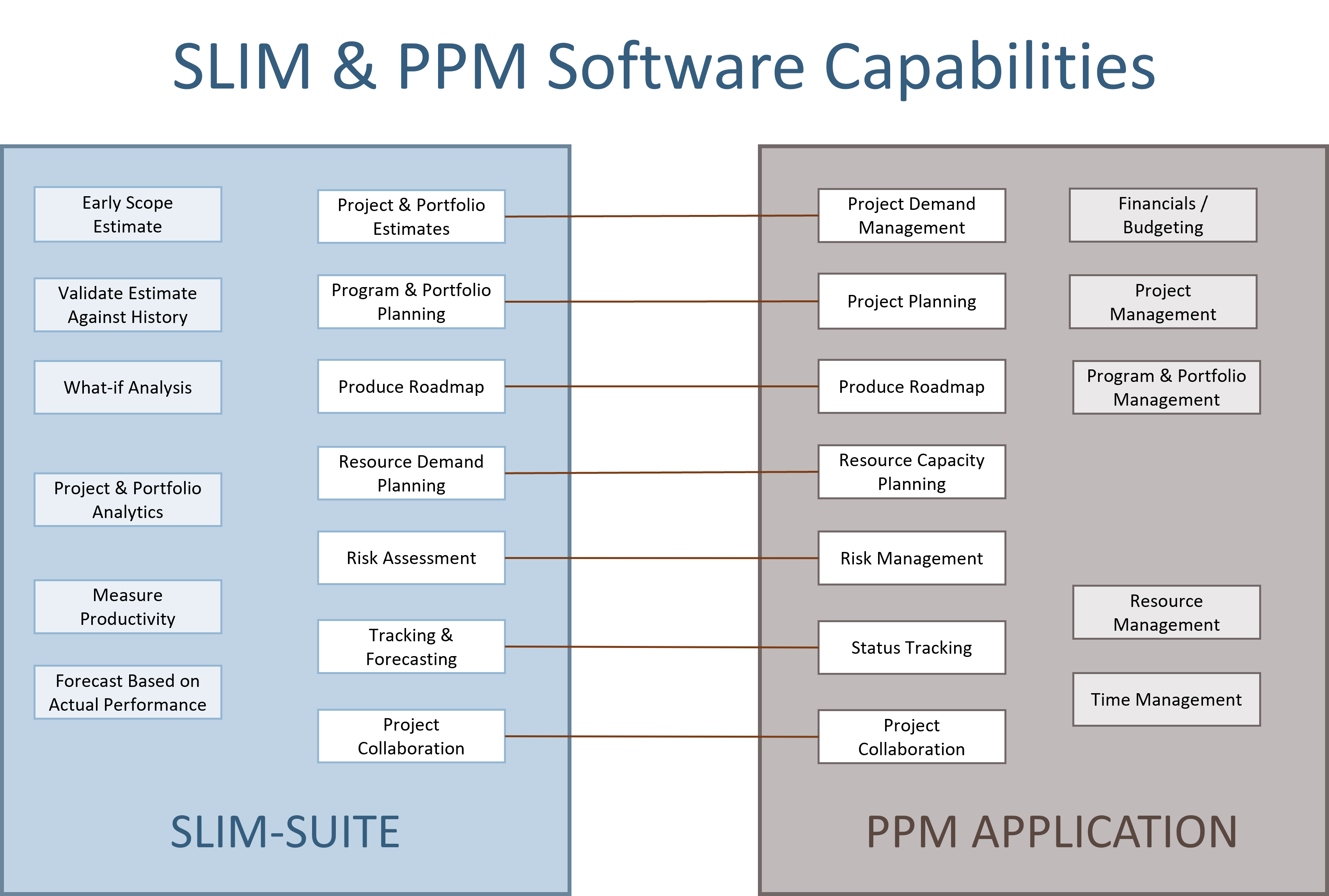
Introduction
Businesses and organizations worldwide need ways to organize and execute the work required to meet strategic objectives. Project Portfolio Management (PPM) software tools “support the selection, planning and execution of a variety of different work packages or containers, including, but not limited to, traditional projects. They often fold in collaboration and communication capabilities and allow work teams and project offices to report, monitor, and identify course correction in resource-intensive project and work environments[1].”
Software development and digital transformation initiatives make up a considerable chunk of business and government portfolios in any given year. The financial, personnel, and time resources needed are significant. Information Technology (IT) programs and portfolios are strategic and high profile and must be planned and managed with great care.
QSM’s Software Lifecycle Management (SLIM) suite of software tools is sometimes confused with PPM applications. SLIM-Suite doesn’t compete with PPM solutions - they complement them, supporting Project Management Institute (PMI) project and portfolio planning and management standards several ways. SLIM works with PPM tools by providing essential data and capabilities to:
- Produce defensible estimates early in the Initiation and Planning stages
- Track project status and forecast completion during Execution
- Measure project performance to guide Optimization efforts.
In this article we will review PPM and SLIM software capabilities to show how they can work together to improve an organization’s ability to execute their programs and reduce risk.
PPM Software Capabilities
Gartner Peer Insights recently reviewed PPM software providers, rating what the community considers essential or critical capabilities, going beyond tool features alone to include integration, security, usability.
The PPM capabilities identified as essential or critical include:
- Project Demand Management
- Project Planning and Management
- Time Management
- Resource Management
- Resource Capacity Planning
- Project Portfolio Management
- Project Collaboration
- Program Management
- Reporting Services
- Security and User Management
- Integration
- Usability
Over 20 products were reviewed, including Smartsheet, Microsoft Project (Online, Planner, and Server 2016), Wrike, Planview, Monday.com, Clarity PPM, and ServiceNow.
SLIM and PPM Comparison
We used the Gartner PPM essential capabilities list as the basis for showing when and how SLIM capabilities enhance these capabilities to up the game of project portfolio management. Reporting Services, Security and User Management, Integration, and Usability were excluded from the analysis.
The diagram below shows SLIM-Suite and PPM application complimentary capabilities using white labels with connecting lines. For example, SLIM’s Resource Demand Planning capabilities support PPM Resource Capacity Planning capabilities. SLIM and PPM unique features are shown using colored labels. Notice that “management” capabilities are the focus of PPM applications – no surprise! Conversely, SLIM capabilities are designed to provide the critical data and analytics needed to make informed, intelligent business decisions during the planning and management processes. SLIM-Suite focuses on software project estimation, because, with more than 45 years in the business, QSM knows that bad estimates lead to bad plans, which ultimately lead to schedule and budget overruns, or worse, project failure.

Read the article to learn about seven software project management capabilities you need to up your game or change it entirely!
